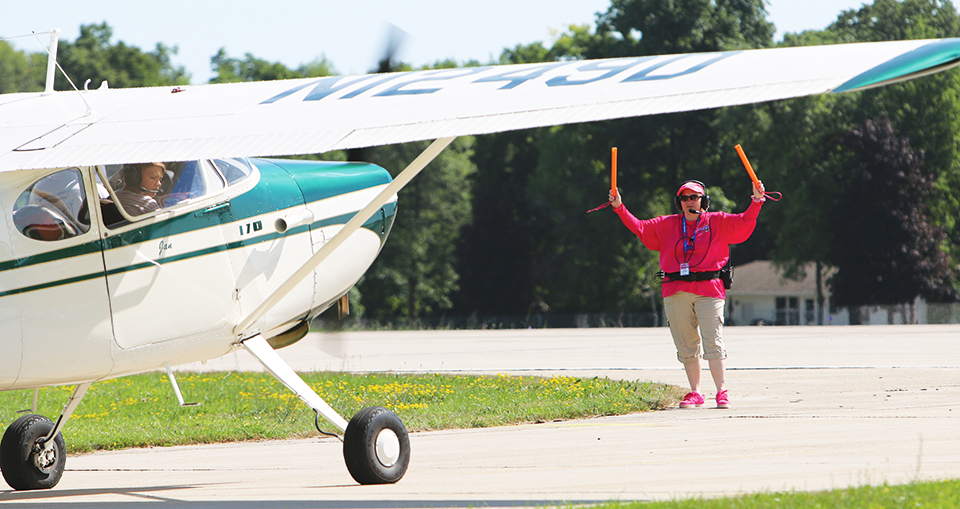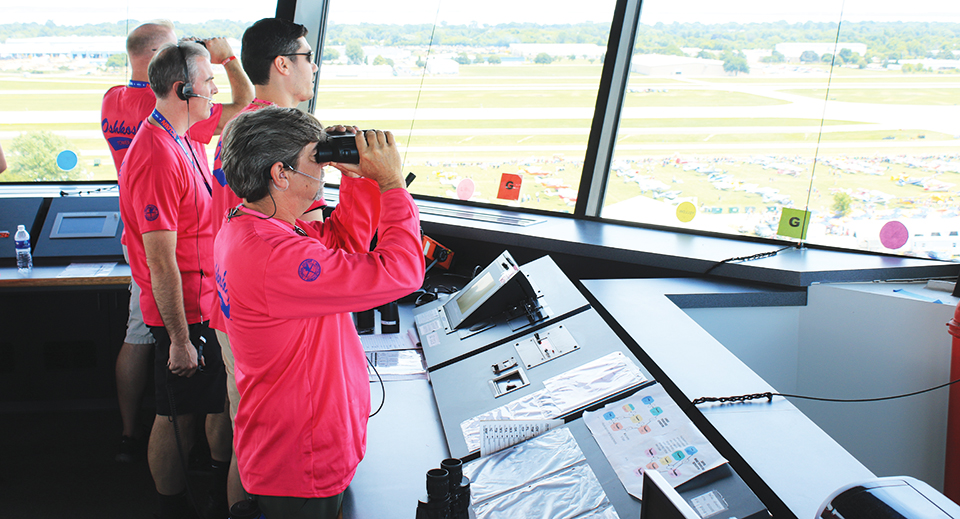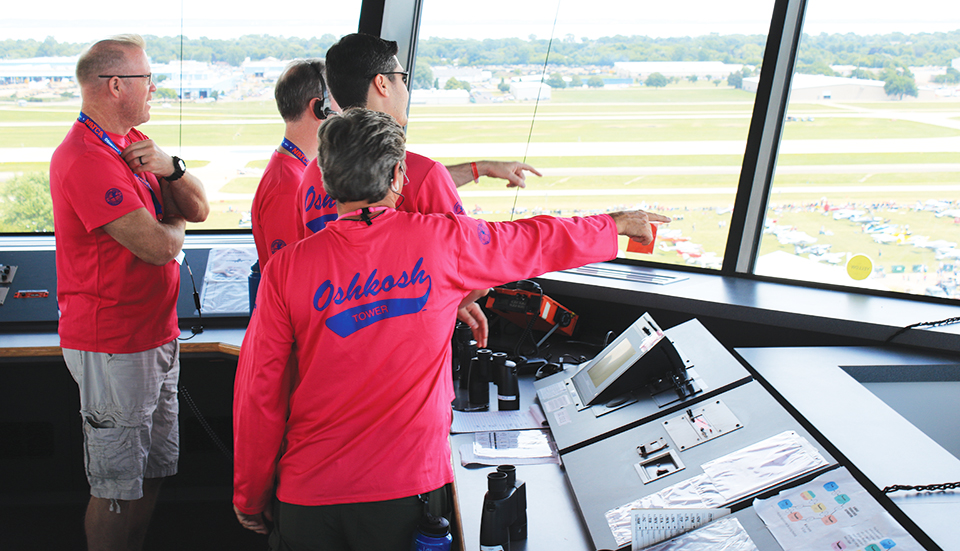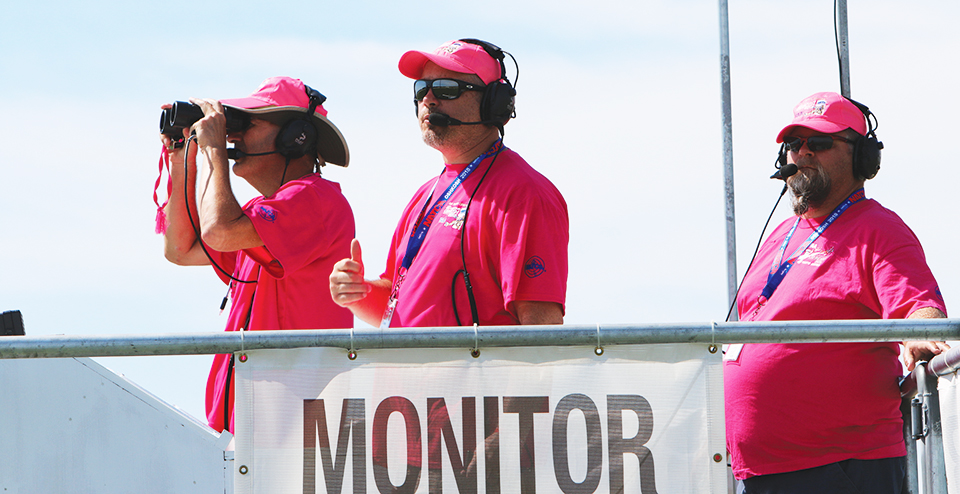Behind the Scenes With Oshkosh Air Traffic Control
By Megan Esau, EAA Assistant Editor
July 25, 2018 - With more than 10,000 airplanes in attendance, the 65 air traffic controllers who sign up to work at EAA AirVenture Oshkosh every year are instrumental in making the World’s Greatest Aviation Celebration a safe and successful event.
The controllers are divided into 16 teams of four people each, and every team has one veteran team lead who has worked AirVenture for three years or more, one AirVenture rookie, and two limited members, with one to two years of AirVenture experience.
“At home we do work as a team, but you’re still responsible for your position by yourself,” said team lead controller David Kaupp, who will be working his eighth AirVenture this year. “Whereas here in the [Oshkosh] tower, it’s a four-man team working to get all those planes on the deck safely, so you’ve got one person communicating on the mic and three others shouting commands at that person, and it’s their job to sort it all out and spit it out without even having to think about it.”
Air traffic staff from across the FAA’s 17-state Central Terminal Service Area and from the Eastern Service Area, including controllers, supervisors, and managers, compete in an application process to work at AirVenture. Veterans bid against other veterans, limited bid against other limited, and rookies bid against other rookies for a spot at what they call the “Super Bowl” of air traffic control.
“We call Oshkosh summer camp for controllers because everybody here wants to be here,” said David, whose home tower is at Greenville-Spartanburg International Airport in South Carolina. “It’s the electricity. It’s the attitude. It’s these people. I am closer to these 64 people I see once a year for 10 days than I am to the 22 other people I see the other 355 days of the year.”
The 16 teams rotate in shifts through the Oshkosh control tower, the Fond du Lac tower, the Fisk approach control site, and the mobile departure platforms scattered around the grounds called MOOCOWs, or mobile operating and communications workstations.
The controllers’ job is an important one, not just because they are relied on to make sure AirVenture is a safe and efficient operation, but because they are also the first voice to welcome incoming pilots to Oshkosh.
David said many people who fly the Fisk arrival are first-timers who may be nervous about flying some of the special procedures that come into play during AirVenture.
“We teach in training day to all the new people, you’re the first voice they hear,” he said. “You set the tone for the show. … We’ve got reduced separation rules, they’re flying close and tight, and sometimes fast, and we’re putting them on the deck and we’re getting them off the deck quick, so as calm and encouraging as we can be will help put them at ease. It gives everybody a good feeling for the show.”
All of the controllers wear signature fluorescent pink shirts, and to wear one of those pink shirts is to be revered by AirVenture attendees.
“Insomuch as it’s an ego boost [to wear a pink shirt], it’s super humbling at the same time,” David said. “To walk out that door of the tower wearing that shirt, and you’ve got people you’ve never met come up to you, shake your hand, thank you for the job you do, give you a hug … it’s super overwhelming. It’s a great sense of satisfaction.”
But, David said, more than anything, the controllers who return to work at Oshkosh every year do so because it’s what they love to do.
“Everybody that does this is deeply invested in aviation,” he said. “That’s why they got into this job. This is what it means to them, and this, Oshkosh, is where they want to be.”
David shared his own opinion of working at EAA AirVenture Oshkosh. His views do not necessarily represent those of the FAA.




